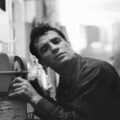Ginsberg is probably the most well-known poet who mastered free verse as a form. Some of his lines have permeated into popular culture in a way that no poet has done since – in some respects, he can be seen as the last culturally important poet – at least, important to mass culture. Since then, popular culture has moved on from poetry as a form and into the audio-visual world of the music industry.
Allen Ginsberg was a… complicated figure, to say the least. His connections to eventual peadophilic organisations and even some of the language used in his poetry makes him a figure that is both revilled by certain modern standards and adored for his progressiveness in other areas, his campaigns for freedom and gay rights, and – above all – his stunning poetry, make him a difficult figure to paint in either a wholly positive or wholly negative light.
Still, when you read a poem like Howl, or Kaddish, or Death to Van Gogh’s Ear, it’s impossible not to be struck by the man’s talent and mastery of the form.
Contents
- 1 Who Was Allen Ginsberg?
- 2 Where Was Allen Ginsberg Born?
- 3 Who Were Ginsberg’s Literary Influences?
- 4 What Was Ginberg’s Writing Style?
- 5 What Were Ginsberg’s Most Famous Poems?
- 6 Awards And Recognition
- 7 What Was The Lasting Cultural Impact of Allen Ginsberg?
- 8 Activism And Political Engagement
- 9 Later Years And Death
- 10 Critical Reception Of His Work
- 11 Legacy
- 12 Frequently Asked Questions
- 12.1 How Did Allen Ginsberg’s Writing Impact The Counterculture Of The 1960s?
- 12.2 How Did Allen Ginsberg’s Activism Shape His Writing?
- 12.3 What Are Some Of Allen Ginsberg’s Most Famous Poems?
- 12.4 What Unique Techniques Did Allen Ginsberg Use In His Writing?
- 12.5 What Were The Main Ideas Behind Allen Ginsberg’s Works?
- 13 Summary:
Who Was Allen Ginsberg?
Allen Ginsberg was a revolutionary figure in the literary world, bringing new and innovative ideas to the forefront of poetry. His work explored political, social, and spiritual themes in ways that had not been done before. Through his writing and activism, Ginsberg changed the landscape of American poetry. This article will provide an overview of Allen Ginsberg’s life and works, exploring how he became one of the most influential poets of the 20th century.
Ginsberg was born in 1926 into a middle-class Jewish family in Newark, New Jersey. He was interested in literature from an early age and began writing poetry when he was just 13 years old. After graduating high school, he attended Columbia University where he met Jack Kerouac and William S. Burroughs – two figures who would heavily influence his work. During this time he wrote some of his first acclaimed works such as “Howl” and “Kaddish”.
In 1955, Ginsberg published “Howl” which is considered one of the most important poems of its generation due to its controversial content about drugs, sexuality, and madness. The poem caused a stir among both readers and critics alike – many were enthralled by its vivid imagery while others were appalled by its explicit language. In any case, it quickly gained notoriety for being groundbreakingly different than anything else at that time – something that has come to define Allen Ginsberg’s career as a poet.
Where Was Allen Ginsberg Born?
Allen Ginsberg was born in Newark, New Jersey to Louis and Naomi Ginsberg in 1926. His early life was largely shaped by his literary parents, who encouraged him to take up poetry at a young age. His youth upbringing in Paterson, New Jersey exposed him to a variety of cultures, which would later influence his work.
Where Did Allen Ginsberg Go To School?
Ginsberg continued his education at Columbia University in 1944 where he began to develop an interest in literature and the potential of poetry as a form of expression. While there, he formed relationships with other poets such as William S. Burroughs and Jack Kerouac—both of whom would be major influences on Ginsberg’s writing throughout his life. He also became involved with the Beat Generation movement which heavily impacted his writing style and subject matter. During this time, Ginsberg also cultivated a strong relationship with mentor Mark Van Doren who helped shape his academic experience and encouraged him to explore multiple genres of literature that eventually became apparent in his works.
Ginsberg graduated from Columbia University in 1948 but continued to remain involved in various literary circles across the city. He was especially involved with the New York Poetry Group where he read pieces from early drafts of ‘Howl’ which quickly gained attention within the group for its innovative ideas about poetry and human condition. It was here that Allen Ginsberg truly found himself as a poet and started developing the style that would become associated with him throughout his life as an artist. As we now turn our attention towards Ginsberg’s literary influences, it is clear that these experiences during his student years had a profound impact on how he approached writing poetry during his career.
Who Were Ginsberg’s Literary Influences?
Allen Ginsberg was heavily influenced by the Beat Generation movement and its members, such as William S. Burroughs and Jack Kerouac. It was from this group of writers that Ginsberg developed his modernist style of poetry which he is most known for. He also drew inspiration from his mentors William Carlos Williams and Mark Van Doren, who encouraged him to explore many different genres of literature. This ultimately resulted in a shift towards more experimental forms of writing which was evident in his later works.
Ginsberg’s most famous poem ‘Howl’ encapsulates the ethos of the beatnik movement perfectly with its frank and raw language. The poem speaks to the struggles faced by many people at the time: political issues, censorship, and social unrest amongst other things. The poem’s extensive use of obscenity and drug references helped it gain notoriety within literary circles which further propelled Ginsberg’s career forward. The poem also contains themes of rebellion against society’s norms as well as a call for solidarity amongst those who feel oppressed—all elements which have been credited with making it one of the most influential pieces of modern poetry ever written.
In addition to ‘Howl’, Ginsberg wrote several other works which are considered important contributions to the Beat Generation canon such as ‘Kaddish’, ‘A Supermarket in California’, ‘America’, and ‘Sunflower Sutra’. All these poems share similar themes and motifs that were seen in ‘Howl’—namely a focus on freedom, personal expression, and social justice—which were all hallmarks of the Beat Poets’ approach towards literature. As we move onto examining Allen Ginsberg’s writing style and themes, it is clear that these influences heavily shaped how he approached poetry throughout his life and left an indelible mark on literary history.
What Was Ginberg’s Writing Style?
Allen Ginsberg’s poetic style was utterly distinct from any other writer of his generation. His use of free-verse form and unconventional rhymes allowed him to express himself in ways that were both emotionally charged and socially critical. This is apparent in ‘Howl’, which features a verse form that has come to be associated with the Beat Movement. The poem’s stream-of-consciousness narrative, which is used to convey its themes of alienation, freedom and hope, is one of Ginsberg’s trademarks.
Aside from the Beat Generation, Ginsberg also drew upon other literary sources such as William Blake and Walt Whitman when writing his lyrics. His most famous poems often featured imagery drawn from these two authors, particularly when it came to conveying ideas around social injustice and political issues. He also wrote about topics such as drug use, mental health, sexuality, and spirituality—all of which he experienced firsthand during his lifetime.
Ginsberg was a master at combining both personal experience with social criticism in order to make powerful statements about modern society. His work remains incredibly relevant today and serves as inspiration for many writers who strive for innovation within the literary world.
What Were Ginsberg’s Most Famous Poems?
Allen Ginsberg is best remembered for his iconic works such as ‘Howl’ and ‘Kaddish’, which are widely considered staples of the Beat Generation’s poetry. His 1956 poem ‘Howl’ was instrumental in bringing attention to the movement, and its raw imagery and passionate language still resonates with readers today. The poem’s influence has been felt far beyond literary circles, inspiring many artists and musicians in its wake.
Ginsberg also wrote a number of other important works throughout his career, including ‘Footnote to Howl’ and ‘American Blues’. Through these pieces, he continued to explore themes of alienation, freedom and hope as he experienced them from a personal perspective. He also included references to American culture, literature, philosophy and music that further enhanced the depth of his work.
The power of Ginsberg’s writing was not limited to just words on a page; he also cared deeply about how his work was presented. He often worked closely with publishers to ensure that his vision was brought to life on the page. This commitment combined with his individual style made him one of the most influential poets of the twentieth century.
Awards And Recognition
It is clear that Allen Ginsberg was one of the most important poets of his time. His works received widespread recognition and acclaim, earning him numerous awards throughout his career. In 1984, he won the National Book Award for Poetry for his collection ‘Plutonian Ode’ and he was a Pulitzer Prize finalist in 1995 for ‘White Shroud’. He also received a number of other awards throughout his lifetime, including two Guggenheim Fellowships, a National Endowment for the Arts grant and an American Academy of Arts and Letters Award.
In addition to these honors, Ginsberg’s work has become part of mainstream culture. His poems have been featured in films such as ‘Dead Poets Society’, ‘The Hours’ and ‘The People vs. Larry Flynt’, as well as on television shows like ‘Mad Men’ and ‘Stranger Things’. The importance of Ginsberg’s poetry has even been recognized by the United States Postal Service with his image being included on a commemorative stamp in 2011.
This lasting legacy speaks volumes to Ginsberg’s impact on American culture and literature. The poet’s work has continued to inspire new generations of readers who are captivated by its raw energy and passionate themes. As one critic wrote, “Ginsberg’s poetry will remain timeless because it speaks to all people with its universal themes—of love, hope, despair and human connection.”
What Was The Lasting Cultural Impact of Allen Ginsberg?
Allen Ginsberg was an iconic poet and an integral part of the Beat Generation, a group of writers and artists from the 1950s who focused on non-conformity and personal freedom. His work has had a lasting impact on American literature and culture, inspiring generations of readers with its raw energy and passionate themes. As one critic wrote, ‘Ginsberg’s poetry will remain timeless because it speaks to all people with its universal themes—of love, hope, despair and human connection.’
Ginsberg’s influence extended beyond the literary world; he was also a powerful cultural force. He actively challenged social norms through his art, using it as a tool to question authority and push back against oppression. His works are often seen as reflections of his own struggles with mental illness, addiction and homophobia — topics that were rarely discussed in mainstream conversation at the time. His unique style of writing has been credited with helping to redefine what it means to be an artist in America.
In addition to being an influential poet, Ginsberg was also a prominent activist. He used his public platform to speak out against war, racism and censorship — issues that are still relevant today. Through his activism he made it possible for those with marginalized voices to be heard. The impact of his work continues even after his death; he remains one of the most iconic poets in American history.
Through both artistry and activism, Allen Ginsberg has left a lasting mark on American culture — one that will continue to inspire generations to come.
Activism And Political Engagement
Like a bright star shining in the night sky, Allen Ginsberg’s work illuminated the darkness of injustice and oppression. He was a powerful voice for social justice and political engagement, using his art to demand change from those in power. His passionate activism inspired protest movements around the world, making it possible for marginalized voices to be heard.
Ginsberg was deeply committed to fighting for civil rights and freedom of expression. He spoke out against the Vietnam War and took part in various anti-war demonstrations. He marched with Martin Luther King during the 1963 March on Washington and actively supported Cesar Chavez’s efforts to unionize farmworkers. In addition, he vocally opposed censorship — from book banning to obscenity laws — and was an outspoken advocate for LGBT rights during a time when homosexuality was still considered taboo.
Throughout his life, Ginsberg used his platform to spread awareness about important issues facing society at large. By doing so, he helped move society forward by inspiring people to take action and make their voices heard. Some of the causes that he championed include:
- Opposing war and violence
- Advocating for civil rights
- Supporting protest movements
- Fighting against censorship
His passion for social justice provided a beacon of hope during a turbulent time in history — one that continues to guide us today as we strive towards a more equitable future.
Later Years And Death
As Ginsberg aged, his poetic career continued to flourish. He published several collections of poetry and prose, as well as a book of essays on Buddhism. He also found success in the music industry, collaborating with musicians like Bob Dylan and The Clash. In addition, he lectured at universities across the country, inspiring generations of young poets.
In his later years, Ginsberg’s personal life was characterized by grief and loss. He suffered from depression and anxiety; his mother died in 1975 and his friend Jack Kerouac passed away shortly after in 1969. Nonetheless, he remained committed to activism until the very end — participating in rallies up until his death in 1997.
Ginsberg’s legacy lives on through his writing and activism — an enduring fame that continues to inspire people around the world today. His work has been hailed as groundbreaking and revolutionary; a testament to the power of art as a tool for social change. Over time, Ginsberg has become an icon whose words continue to resonate with readers everywhere.
Critical Reception Of His Work
In a career spanning over four decades, Allen Ginsberg’s poetic works were met with both acclaim and controversy. His social commentary and experimental style stirred debate among literary critics, earning him both praise and criticism. His work was a reflection of the turbulent times in which he lived, making his writing an invaluable document of 20th century history.
Ginsberg was heralded as one of the most influential poets of the Beat Generation — a revolutionary who popularized free-verse poetry and challenged traditional conceptions of art. His works often explored themes of politics, sexuality, and spirituality; combining personal narrative with political critique to create powerful poems that resonated with readers around the world. While some praised him for his unique approach to language and form, others critiqued him for his explicit use of profanity and drug references.
Despite this mixed reception from literary critics, Ginsberg’s work has endured through time as an iconoclastic example of modern American poetry. His inventive blending of genres pushed boundaries in literature — inspiring future generations to embrace their own individual styles. By embracing his own voice and vision, Ginsberg created timeless works that continue to captivate readers today.
Legacy
Allen Ginsberg’s legacy is one of innovation and revolution in literature. His unique style and poetic vision have inspired generations of writers to push the boundaries of art and language. From his groundbreaking works like “Howl” to his lesser-known gems, Ginsberg’s influence on literature can still be felt today. Here are some ways in which Ginsberg’s poetry continues to shape the literary landscape:
- Impact on Poetry: Ginsberg’s work has had a profound impact on the world of poetry. His use of free-verse style, controversial topics, and personal narrative created a new canon for poets around the world. His revolutionary approach encouraged future generations to write from their own experience, eschewing traditional conventions in favor of personal expression.
- Influence on Pop Culture: Ginsberg’s influence can also be seen in pop culture, particularly in music. His poem “Howl” has been referenced by artists such as Bob Dylan (obviously), Jay-Z (so I’m told), and Lana Del Rey — demonstrating its enduring relevance across genres and generations. Furthermore, his radical attitude towards art has served as an inspiration for countless musicians looking to break with convention.
Ginsberg’s contributions to literature have been remarkable, leaving behind an indelible mark that will continue to inspire readers for years to come. Through his words he showed us that it is possible to challenge social norms and conventions through art — providing hope for future generations of writers who choose to embrace their own individual voice.
Frequently Asked Questions
How Did Allen Ginsberg’s Writing Impact The Counterculture Of The 1960s?
The 1960s was a time of cultural revolution and Allen Ginsberg was at the forefront of the movement. His writing reflected his activism, providing an outlet to challenge the status quo and embrace alternative ways of living. Ginsberg’s works were an integral part of the counterculture in the ’60s, inspiring many to take action and stand up for their beliefs.
Ginsberg’s writing had a profound impact on the counterculture of the ’60s. His work was filled with passionate calls for social justice and political change, urging people to question authority and break away from oppressive systems. His work also served as a powerful tool for protesting the Vietnam War, inspiring many Americans to come together in opposition to the conflict. Furthermore, Ginsberg’s poetry was often seen as a rallying cry for individual freedom and expression, encouraging people to think beyond traditional boundaries and explore alternative lifestyles.
Ginsberg’s influence on the ’60s counterculture is undeniable. He used his writing as a platform to spread his message of peace, love, and understanding far beyond his own circle of activists. Through his work he pushed boundaries, inspired creativity among young minds, and provided hope that there could be another way forward. By embracing new ideas, challenging conventions, and advocating for social justice, Ginsberg helped shape one of America’s most important cultural movements – one that continues to influence our lives today.
How Did Allen Ginsberg’s Activism Shape His Writing?
Allen Ginsberg was an American poet who used his writing to speak out on issues of political and social justice. He was a passionate activist and his activism had a significant influence on his writing. In the 1960s, Ginsberg’s activism and writing had a huge impact on the counterculture of the era.
Ginsberg’s activism was driven by his desire for societal change. He protested against the Vietnam War, racism, sexism, and censorship, among other topics. His activism could be seen in many of the works he wrote; poems such as “America” and “Howl” were full of anger at injustices he saw around him. Ginsberg’s writings made people think differently about their society and encouraged them to take action for change.
The influence of Ginsberg’s activism on his writing extended beyond poetry; it can also be seen in his essays, novels, and plays. His work helped to shape popular culture during the 1960s by encouraging people to question what they accepted as normal. Ginsberg’s writings provided a platform for marginalized voices to be heard, which allowed for greater diversity within literature and culture generally:
- It gave authors from different backgrounds an equal chance to have their work published
- It inspired people to recognize oppression in its various forms
- It fostered creativity by showing how diverse perspectives can lead to innovative art
Ginsberg’s activism was far-reaching; it not only changed public opinion but also shaped popular culture during one of the most turbulent times in history. Through his writings, he showed that there is power in speaking out against injustice and that individuals can make a difference when they come together with a common purpose. This message still resonates today as we continue striving towards progress through collective action.
What Are Some Of Allen Ginsberg’s Most Famous Poems?
When one thinks of the greats in literature, it’s impossible to forget the iconic words of Allen Ginsberg. His works are not only some of the most celebrated and beloved poems of all time, but also stand as an everlasting reminder of his passion for activism and its influence on his writing. From ‘Howl’ to ‘A Supermarket in California’ and beyond, Ginsberg’s famous poems have become a mainstay of literary excellence that will never be forgotten.
To explore the lasting impact of Ginsberg’s writing is to take a journey through decades of masterful craftsmanship. His works have been praised by critics for their unique blend of social criticism, humour, and emotional intensity. He was unafraid to embrace controversial topics such as politics, sexuality, drug use and more in his works — making them not only powerful but also timelessly relevant.
Through his unmistakable voice and stylistic approach, Ginsberg created an entire world within his verses. From vivid imagery exploring mundane everyday sights to thought-provoking reflections on life itself – Ginsberg’s writing has inspired generations with its message of hope and resilience in the face of adversity. With such a wide variety of poetic styles across allen ginsberg poems, there is something for everyone to enjoy within the writings of this remarkable poet.
What Unique Techniques Did Allen Ginsberg Use In His Writing?
Allen Ginsberg is well-known as a beat poet who revolutionized modern poetry. His unique style of writing was filled with improvisational and experimental techniques, making him one of the most influential poets of his time. One of his most notable achievements was changing the way poetic structure and style were viewed in the literary world. He was, in particular, a driving force behind the acceptance of free verse in popular American culture – perhaps, second only to Walt Whitman in his championship of the form.
Ginsberg had a knack for creating an immersive experience through his poetry, which often contained elements of free-form expression. His work featured a mix of beat-poetry mixed with improvisational-poetry, resulting in a raw and powerful message that resonated with readers around the world. He also incorporated elements of jazz into many of his works, giving them an extra layer of depth and emotion.
Through Ginsberg’s masterful use of poetic structure and style, he was able to evoke powerful emotions from his audiences. He used techniques such as repetition, metaphor, and imagery to create stories that were both thought-provoking and moving. By combining these tools with experimental-poetry structures, he created pieces that truly pushed the boundaries of traditional literature. Here are three examples:
- Exhilarating descriptions that bring readers on a journey through their imagination;
- Unexpected endings that leave audiences feeling both curious and inspired;
- Rhythmic language that allows readers to feel immersed in the story or poem.
By using these unique writing techniques, Allen Ginsberg crafted works that still fascinate readers today and will continue to do so for generations to come. His legacy remains alive through each piece he wrote – providing us all with insight into how different styles can be used to craft beautiful pieces of art.
What Were The Main Ideas Behind Allen Ginsberg’s Works?
What were the main ideas behind Allen Ginsberg’s works? Allen Ginsberg was an influential poet and social activist who was a key figure in the Beat Generation and Beatnik movements of the 1950s and 60s. His writing centered around themes of political activism, social justice, and counterculture. Here are some ways Allen Ginsberg expressed these ideas in his works:
First, Ginsberg championed individualism by encouraging readers to explore their own thoughts and feelings. He did this through his free-flowing style of writing which allowed for creativity and spontaneity. This encouraged people to break away from traditional notions of what is “normal” or “acceptable” and to embrace their own unique perspectives.
Second, Ginsberg used his work to promote justice for those who were oppressed or marginalized by society. He believed that everyone should have equal rights regardless of race, gender, sexuality, or religion. He was also politically engaged and used his poetry as a platform to speak out against war, poverty, racism, and other forms of oppression.
He also advocated for an alternative lifestyle outside of mainstream culture. Ginsberg was part of a growing movement that rejected traditional values in favor of living life unconventionally. Through his writing he encouraged readers to embrace an alternative way of thinking about themselves and the world around them.
From personal expression to political activism to embracing counterculture values; these were the main ideas behind Allen Ginsberg’s works that made him such an important figure in literature history.
Summary:
Allen Ginsberg was a revolutionary poet and activist whose work made an indelible impact on the counterculture of the 1960s. His writing was raw, honest and often highly charged with emotions. He used unique techniques like stream-of-consciousness to craft vivid images that resonated with his readers. Through his works, he sought to challenge the status quo and promote progressive ideas on topics such as drug use, sexuality, politics, and war. His legacy is one of a fierce advocate for freedom of expression and a reminder that poetry can be a powerful tool for social change.
Ginsberg’s words still echo today in the hearts of many who seek to defy convention and fight against oppression. His works created a space for people to confront their fears, express themselves freely without judgement, and come together in collective action. As we move forward into an uncertain future, let us remember Allen Ginsberg’s words like a lighthouse guiding us through stormy seas: “Be kind to yourself…kindness is the greatest wisdom”.
Through his writing and activism, Allen Ginsberg touched countless lives—teaching us about courage in the face of adversity and inspiring us to strive for justice through our words. Let us honor his memory by continuing his fight for freedom of expression; by speaking up against injustice; by celebrating our humanity through poetry; and by being kinder to ourselves and each other.
Of course, we can’t ignore some of the worse aspects of his character – his association with NAMBLA, and his support for certain figures whom history (for one reason or another) hasn’t remembered in the best light. However, he was an extremely important poetic figure, and one who has gone on to influence poets, writers, musicians and artists ever since.
- Glossary of Japanese Poetry Terms - 26 February 2025
- What is Waka Poetry? - 23 May 2024
- How to Identify the Kigo in a Haiku: - 22 March 2024





